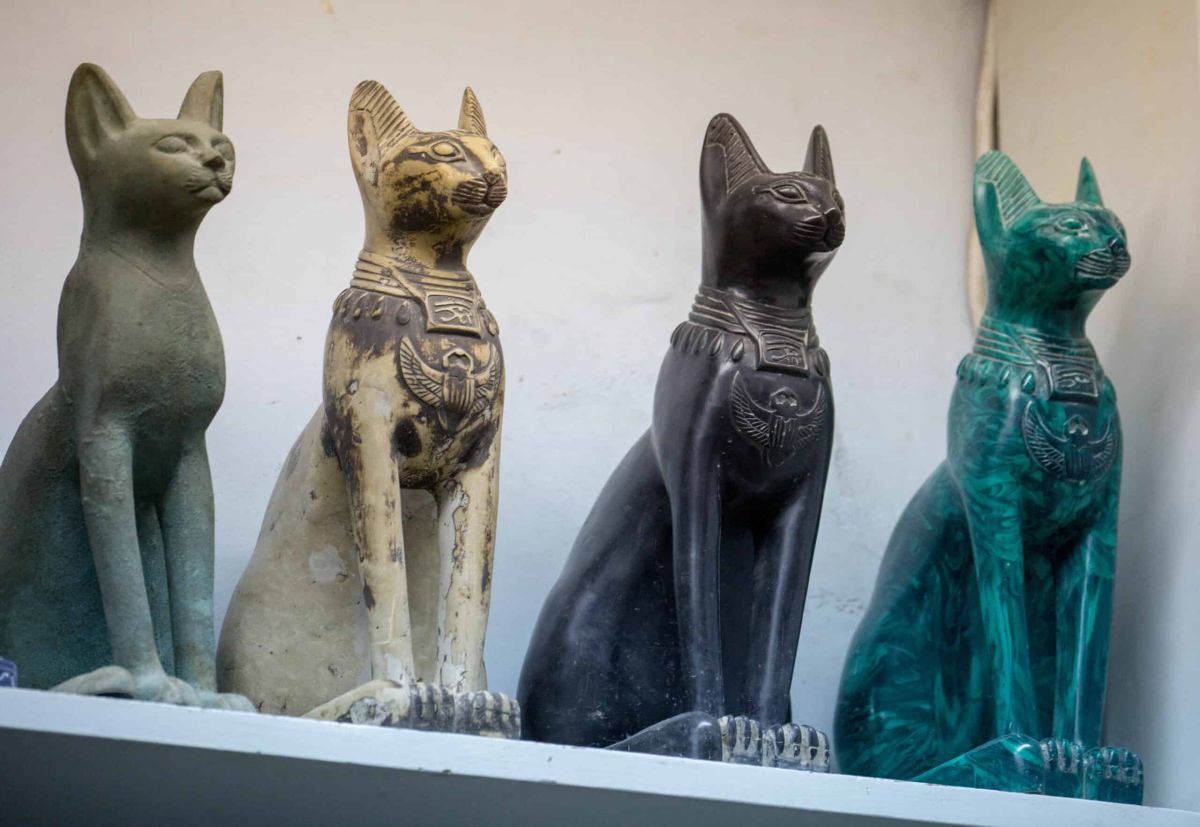The Sacred Roar: Cats in Ancient Egypt

Ancient Egypt, a land of pharaohs, pyramids, and powerful deities, held a deep fascination with the natural world. Among the animals that captured their imagination, cats held a particular significance. More than just wild creatures, these majestic predators became potent symbols, woven into the fabric of Egyptian religion, art, and daily life.
For the ancient Egyptians, the lion was perhaps the most prominent of the big cats. It represented power, royalty, and the fierce protective energy of the sun. The solar deity Ra, often depicted with a lion’s head, was associated with the sun’s scorching rays and its ability to vanquish darkness. Similarly, the goddess Sekhmet, depicted with a lioness head, embodied both the destructive and curative power of the sun. Her vengeful nature was tempered by her role as a protector, and she was often invoked to ward off disease and misfortune. The Pharaoh, considered the earthly representative of the gods, frequently adopted lion imagery, emphasizing his strength and authority. Lions were depicted in royal art, architecture, and even on the thrones of kings. Royal hunts often featured symbolic lion hunts, further cementing their association with power and kingship.
Beyond the lion’s prominent role, the leopard and cheetah also held significance. While less directly tied to the sun, these faster and more elusive cats were associated with stealth, hunting prowess, and a connection to the wilderness. Leopard skins were worn by priests and dignitaries, signifying their high status and mystical capabilities. Cheetahs, less common in direct representations, likely served as symbols of speed and agility, their image possibly linked to the pharaoh’s swift journey into the afterlife.
The high regard for cats permeated all levels of Egyptian society. Beyond their religious significance, cats held a prominent place in everyday life. They were cherished members of the household, depicted in art alongside children and adults, and were often adorned with jewelry and collars. Their practical role in keeping rodent populations in check made them invaluable to the ancient agricultural economy. Mummified cats have been discovered in tombs alongside their owners, indicating a belief in an afterlife where they would continue their companionship. Hurting or killing a cat was a serious offense, often punishable by death. In fact, when a house cat died, the family was said to go into mourning, shaving their eyebrows as a sign of grief.
The presence of cats in Egyptian art and religion reveals a society that deeply admired the strength, beauty, and mystery of these animals. From the majestic lion to the swift cheetah, these creatures were not just symbols of power; they were considered to be reflections of the gods themselves. The enduring legacy of ancient Egypt shows us the fascinating way in which the natural world could shape a culture’s beliefs, art and understanding of life and death.
In Conclusion
The powerful imagery of cats in ancient Egypt offers a glimpse into the complex worldview of this ancient civilization. These creatures, far from being mere animals, were imbued with divine qualities, reflecting the Egyptians’ profound understanding of and respect for the natural world. Their presence in art, religion, and royal imagery solidifies their place as some of the most potent symbols of ancient Egypt, continuing to fascinate us centuries later.



